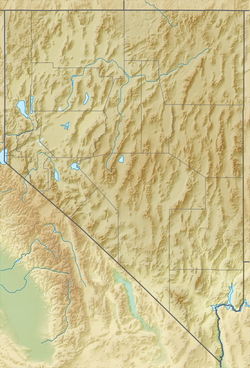| Belted Range | |
|---|---|
| Highest point | |
| Elevation | 2,149 m (7,051 ft) |
| Geography | |
| Country | United States |
| State | Nevada |
| District | Nye County |
| Range coordinates | 37°21′21.820″N116°8′40.152″W / 37.35606111°N 116.14448667°W |
| Topo map | USGS Quartet Dome |
The Belted Range is a mountain range in Nye County, Nevada, United States. [1] [2] The range is approximately 100 miles northwest of Las Vegas and midway between the Basin and Range National Monument to the northeast and the Death Valley Wilderness to the southwest. [1]
